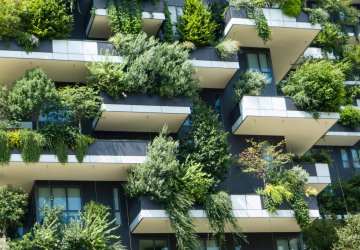
The newspapers are full of it: ‘We have to achieve sustainability’. Organisations are under pressure to reduce costs while still achieving sustainability targets. This is one of the most significant conflicts within the sustainability phenomenon. Or is it? No matter how often it is thought that cost savings and sustainability don’t go hand-in-hand, practice has shown otherwise. More about this shortly.
Research by the University of Toronto has shown that 27 cities are responsible for 9 percent of the worldwide electricity consumption. However these cities ‘only’ accommodate 6.7 percent of the world’s population. This study also shows that electricity consumption is linked strongly to the built floor surface area.
Making real-estate sustainable is a smart and future-proof way to reduce electricity consumption. Sustainability is often associated with new buildings. After all, new buildings are well suited to the application of modern, energy-saving technologies. ‘The Edge’ from Deloitte on Amsterdam’s Zuidas in the Netherlands, is a splendid example of a sustainability proof building. But what happens with existing buildings? Making existing buildings sustainable is a concern still not tackled, simply because of the assumption that it will be expensive and that the profits from this expenditure will only end up benefiting the tenant. And that’s a missed opportunity as 99 percent of buildings are in fact part of the existing building stock.
The study by the University of Toronto mentioned earlier, shows that extra taxes have succeeded in reducing electricity consumption in London, despite the economic growth. But are compulsory rules & taxes the answer? Or should it come from practical tools which provide an insight and offer methods to achieve energy savings?
Making existing buildings sustainable and cutting costs can coexist perfectly, as shows the example of Triodos Bank shows it. ‘Forget reducing the negative impact; go for increasing the positive impact,’ insisted Guus Berkhout, Fund Manager for Triodos Bank, during the Planon Masterclass.
Presence detection, heat and cold storage, a heat exchanger wheel; their building – constructed in 1959 – in Amersfoort, the Netherlands, is full of energy-saving tricks which are not visible to the naked eye. Despite its age, this building was in fact suitable for the latest ‘sustainability tricks’. Triodos Bank believes this will help reduce its annual energy costs by half. Did they need compulsory rules for this? Or does Triodos Bank simply understand the principle of ‘rethinking’ sustainability in organisations?





















